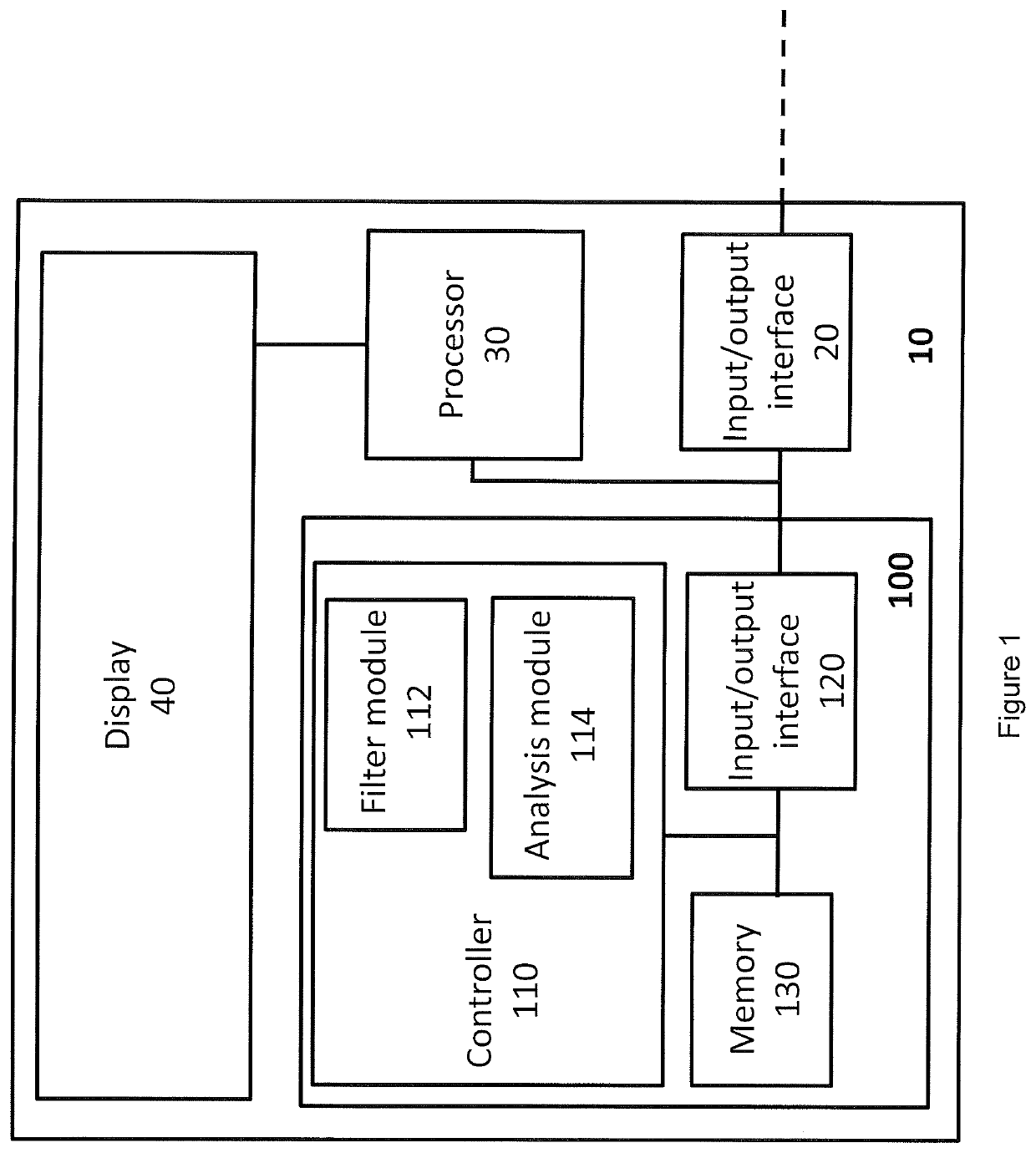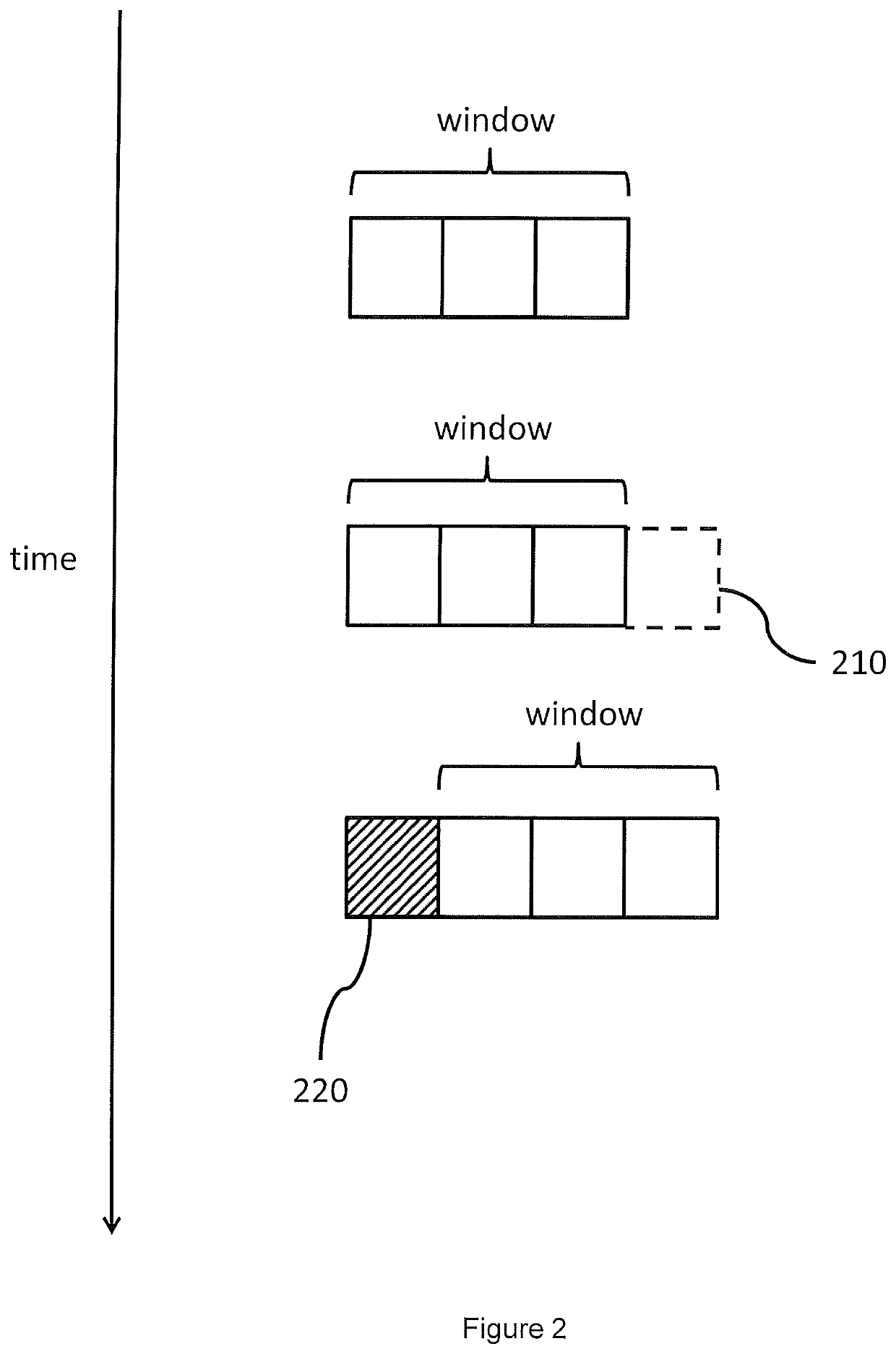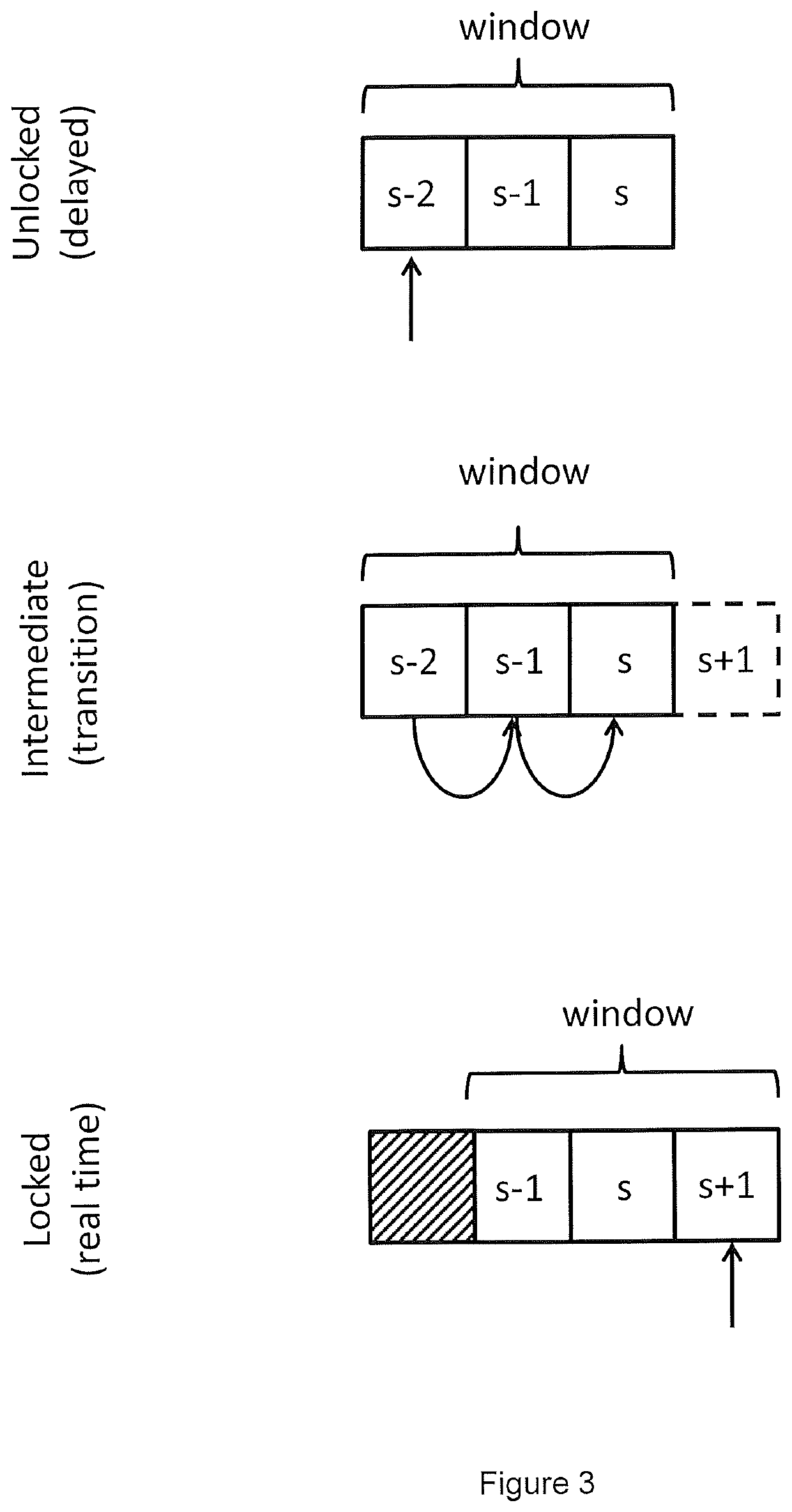Haemodynamic monitor with improved filtering
a technology of filtering and haemodynamic monitor, which is applied in the field of haemodynamic monitor with improved filtering, can solve the problems of artificially high stroke volume variation or pulse pressure variation value, and achieve the effect of improving the filtering quality
- Summary
- Abstract
- Description
- Claims
- Application Information
AI Technical Summary
Benefits of technology
Problems solved by technology
Method used
Image
Examples
Embodiment Construction
[0050]Embodiments of the invention provide a means of filtering haemodynamic parameters such as stroke volume or pulse pressure to remove irregular cardiac cycles to allow derivative parameters such as stroke volume variation or pulse pressure variation to be calculated more accurately. This may be performed on a beat-to-beat basis using haemodynamic values received in real-time. Accordingly, the digital signal processing described herein may be performed derivative physiologic parameters that are produced from beat-to-beat analysis of the arterial blood pressure waveform. The effect of the filtering is to identify individual beats and their associated derived parameters (for instance, stroke volume or pulse pressure) that should be excluded from subsequent calculations.
[0051]The embodiments described herein detect abnormal levels of variation based, for instance, on the coefficient of variation (CV) derived from a sample of values covering at three or more heartbeats. The threshold...
PUM
 Login to View More
Login to View More Abstract
Description
Claims
Application Information
 Login to View More
Login to View More - R&D
- Intellectual Property
- Life Sciences
- Materials
- Tech Scout
- Unparalleled Data Quality
- Higher Quality Content
- 60% Fewer Hallucinations
Browse by: Latest US Patents, China's latest patents, Technical Efficacy Thesaurus, Application Domain, Technology Topic, Popular Technical Reports.
© 2025 PatSnap. All rights reserved.Legal|Privacy policy|Modern Slavery Act Transparency Statement|Sitemap|About US| Contact US: help@patsnap.com



